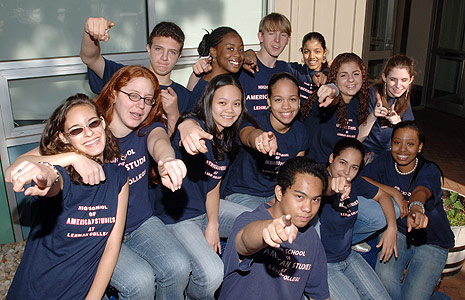
Fantasy games are becoming more popular among gamers. These games often feature a hero as well as a group of creatures. Producers have created more thrilling games featuring monsters due to the popularity of fantasy games. Here are some key points to keep in your mind when playing this type of game.
Gameplay
Gameplay in Games of Monsters is a dual stick shooter with a retro feel. The graphics are pixelated, and the game features leaderboards. Players take control of a wizard who gains powers from destroying evil spirits. Players will battle against a multitude of monsters including robots as well as humans.
Weapons
There are many weapons options available when you play games with monsters. You can choose from a variety of weapons including swords or shields. Some weapons are legendary. Others have exceptional gameplay benefits or designs. In a game like Monster Hunter Rise, you can choose to use a variety of different weapons, depending on what type of monster you are hunting.

Powerful weapons that can penetrate the armor of the monster are some of the most powerful weapons. Lances and guns can also be used to attack the monster. You must be careful with these weapons. These weapons are deadly if used properly, and a well-placed gun can easily kill the monster.
Dialogue
Different types of dialogue can be used in games about monsters. Some games are straightforward and easy to understand, while others have more intricate dialogue. For example, the game New Horizons may contain dialogue that is very predictable, such as talking about bugs and walls. Other games, however, are more complex and require that the player make more difficult decisions like whether to kill a creature.
Storyline
The story of games of giant monsters is what often draws people in. Monster Hunter games are often set in a world where monster hunters must battle huge monsters and discover new environments. However, they also place a lot of emphasis on crafting and gathering. These games have an engaging storyline that is often surprising.
The success rate of females
Although male protagonists tend to be the most prominent, female villains are very rarely mentioned. Female enemies tend to lack the cultural niceties associated with femininity, making them difficult to kill. Female enemies are therefore less common in videogames. Women are still dangerous and threatening, however. There are plenty reasons to play female monsters if you are ready to face their potential.

First, male monsters are often less powerful than their female counterparts in video games. There are exceptions. Monster Hunter World features a female-only character called The Handler. She isn’t a fighter but she does have a hobby in food. She even talks about bulking up, which is practically taboo for modern women.
FAQ
What are the different types of early childhood education?
There are many ways to describe early childhood education. The most common ones include:
-
Preschool - Children ages 2 to 5
-
PreKindergarten - Children ages 4 to 6
-
Head Start/Headstart for Children Ages 0-3
-
Day Care/ Daycares- Children aged 0-5
-
Child Care Centers - Children ages 0 to 18
-
Family Child Care - Children ages 0 to 12
-
Home Schooling - Children ages KG to 16
How long does it take to become an early childhood teacher?
The four-year process to earn a bachelor's level in early child education takes. It will take you two years to complete the required general education courses at most universities.
After your undergraduate studies, most people enroll in graduate school. This step allows students to focus on a particular area.
For example you could focus on child psychology, or learning disabilities. You must apply for a teacher preparation program after you have completed your master's degree.
The process could take several years. During this period, you will work with experienced educators to gain real-world knowledge.
Finally, before you can begin teaching, you need to pass the state exams.
It takes many years for this process to complete, so you may not be able immediately to join the workforce.
How long should I spend preparing for college?
The time it takes to prepare to go to college will depend on how much time you are willing to dedicate to your studies. Start taking college preparation courses as soon as you finish high school if you want to be able to go straight to college. You don't have to plan if you expect to be away for several years before going to college.
Discuss your plans with your teachers and parents. You may be able to suggest courses of study. Track the grades and courses you've taken. You'll be able to see exactly what you need next year.
How can I get scholarships?
Scholarships are grants that can be used to pay college costs. There are many types and types of scholarships. There are many types of scholarships available.
-
Federal Grants
-
State Grants
-
Student Loans
-
Work Study Programs
-
Financial Aid
Federal grants come directly to the U.S. Most federal grants require applicants fulfill certain requirements. Financial need is one example.
Each state offers state grants. Some states offer state grants based only on financial need. Other states award money for specific reasons.
Banks and other lending institutions issue student loans. Students often borrow money to pay for tuition and living expenses.
Work-study programs are designed to encourage employers to hire qualified students. Employers are required by law to pay minimum wage.
Financial aid is available to help low-income families pay for college. It covers all or most of the tuition costs.
Statistics
- Data from the Department of Education reveal that, among 2008 college graduates, 92.8 percent of humanities majors have voted at least once since finishing school. (bostonreview.net)
- And, within ten years of graduation, 44.1 percent of 1993 humanities graduates had written to public officials, compared to 30.1 percent of STEM majors. (bostonreview.net)
- They are more likely to graduate high school (25%) and finish college (116%). (habitatbroward.org)
- These institutions can vary according to different contexts.[83] (en.wikipedia.org)
- Among STEM majors, that number is 83.5 percent. (bostonreview.net)
External Links
How To
What is vocational education?
Vocational education prepares students for the workforce after high school. Students are trained in specific skills to be able to do a particular job such as welding. It also includes on-the-job training in apprenticeship programs. Vocational education stands out from general education. This is because it focuses less on general knowledge and more on developing skills for specific occupations. Vocational education's goal is to help students find employment after they graduate.
Vocational education can be offered at any level of schooling: primary, secondary, college, university, technical institutes and trade schools. Many specialized schools are available, including nursing and culinary schools, law schools medical and dental schools, veterinary medicine school, veterinary medicine schools, firefighting training schools, police academies, military academy, and other military schools. Many of these offer both academic instruction, and practical experience.
Over the past decade, a number of countries have made substantial investments in vocational education. These include Australia, Denmark and Finland, Germany. However, it is not clear if vocational education is effective. Some critics claim it is not effective in improving students' employability. Others argue that it helps them prepare for life after school.
According to the U.S. Bureau of Labor Statistics (47% of American adults are currently holding a postsecondary certificate/degree related to their current job), this figure is higher among those with more education. This percentage is higher among those with higher education. 71% percent of the 25-29 year olds with a bachelor's degree are currently working in fields that require postsecondary credentials.
The BLS reported that almost half the adult population of the country had at least one form of postsecondary credential as of 2012. Around one-third of Americans hold a two or four-year associate degree. One fifth of Americans have a master's, or doctorate.
In 2013, the median annual wage for persons holding a bachelor's degree was $50,900, compared to $23,800 for those without a degree. For advanced degrees, the median annual wage was $81,300.
The median wage for people who did not finish high school was only $15,000. A person with a lower high school diploma earned $13,000 annually.